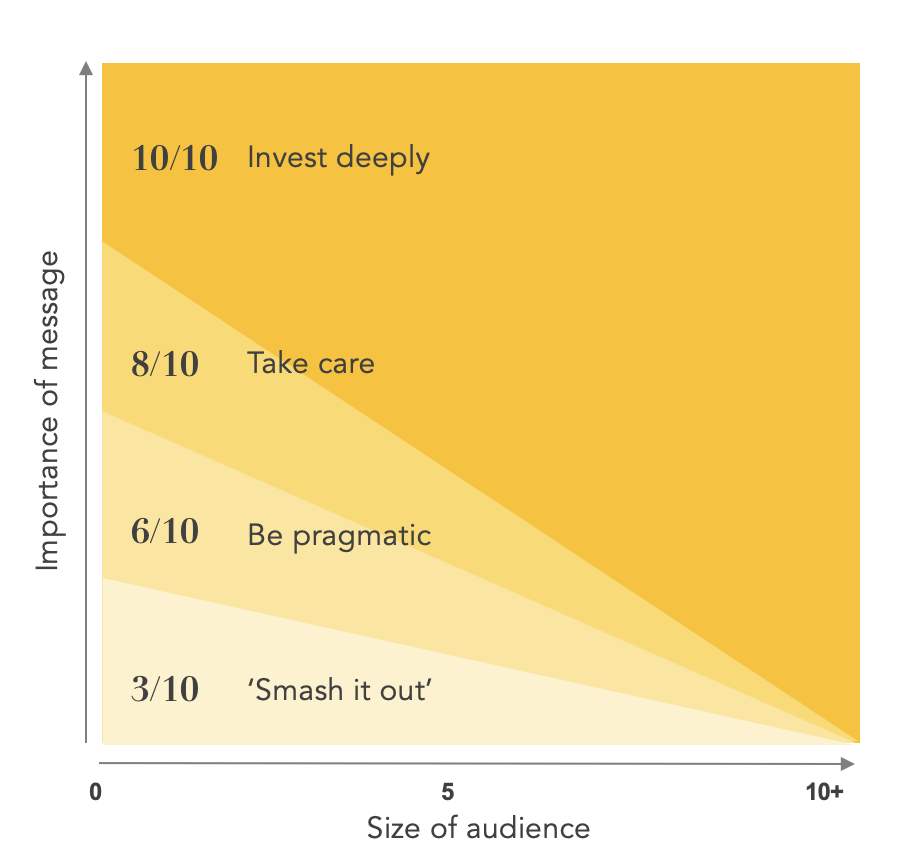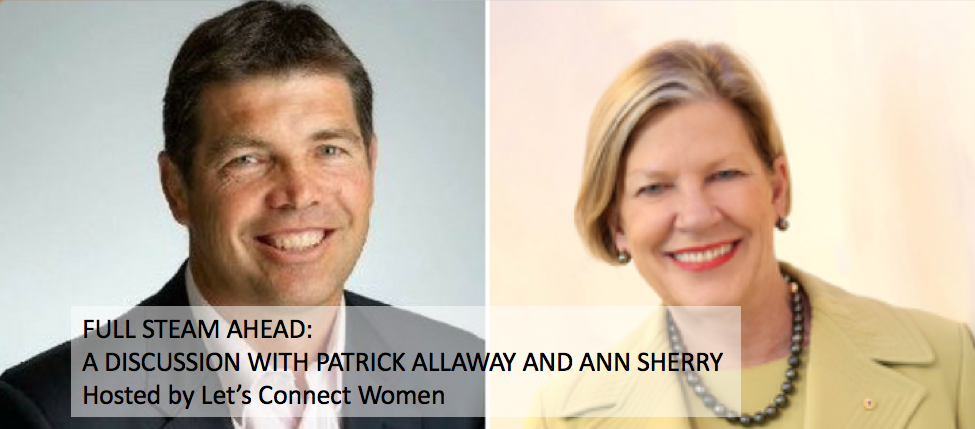×

LEARN MORE ABOUT THE WORKSHOP KIT
Enter your email below and we will keep you updated as more information is released about the kit.

I came to Friday's interview with Matt Lohmeyer a bit selfishly. Negotiating has often made me nervous and yet he seems to thrive while discussing and doing it.
So, I wanted to learn how he gets great outcomes while actually enjoying the process.
If I am to interpret Matt correctly, the ‘insight' is to explore ‘possibility’ and seek out ‘opportunity’ rather than be driven by the fear of being cornered by a win/lose proposition.
Here are three fear busters that I took away that I hope help you also.
Let me now give you some more detail about these before offering the video recording and two powerful and free tools from Matt.
1 – Deal with the hairy beasts first. By that, Matt suggests dealing with the most difficult issues of a negotiation first. He recommends agreeing the negotiation strategy at the beginning as a way to build rapport, rather than dealing with small items. An example might help.
At the beginning you might ask the other person (note, I am deliberate in not saying ‘the other side') to identify their biggest concern. You might even suggest that you think item X is going to be the most difficult thing to resolve.
This gives them an opportunity to agree or to indicate that item Y or Z is a bigger deal for them. Taking this approach offers many advantages. You
2 – See popular techniques as tools rather than the primary strategy. Matt suggests that emphasising win-win solutions or splitting the difference results in mediocre outcomes. Why?
Because they leave you thinking small. They lead you to
3 – Avoid saying no, and frame your response as a possible alternative. This doesn't mean NEVER saying no as Matt was quick to point out, but rather avoid saying it.
To give an example. Instead of saying ‘No, I can't have coffee with you tomorrow afternoon', say ‘I could have coffee with you at 9am tomorrow at a location near me'.
This then puts the onus back on the other person to decide whether they will make the extra effort to make that time and location work.
This is a simple example, but a powerful principle that empowers me by offering a constructive way out.
These are just some of the gems that Matt shared. You can visit the recording below as well as download two powerful resources he has for us all.
1. A diagnostic to help you calibrate your personal blend of preferred negotiation strategies with the norm group of over 2,500 other executives. How do you actually negotiate? To unlock this tool, you will need to use the password Mythbusters.
2. A generously detailed PDF full of negotiation strategies for you to employ – register below to receive access to Matt's eBook:
Kind Regards,
Davina

I love what I do.
I help senior leaders and their teams prepare high-quality papers and presentations in a fraction of the time.
This involves 'nailing' the message that will quickly engage decision makers in the required outcome.
I leverage 25+ years' experience including
My approach helps anyone who needs to engage senior leaders and Boards.
Recent clients include 7Eleven, KPMG, Mercer, Meta, Woolworths.
Learn more at www.clarityfirstprogram.com
(*) Numbers are based on 2023 client benchmarking results.

Have you ever wondered whether a storyline is the right tool to use when you are not providing a recommendation?
Perhaps you have been asked to undertake some analysis or are concerned that your audience may not want you to be too assertive or direct?
If so, you may enjoy some insights from this week's coaching discussions which conveniently follow on from last week's focus on communicating details.
When delivering analytical findings, particularly to a sensitive audience, summarise your findings rather than synthesising or recounting your analytical process.
Provide a summary answer rather than a true synthesis. The examples below illustrate how to offer a summary rather than a synthesis:
Avoid describing what you did to deliver your findings, but rather focus on what you found.
This played out perfectly this week when a data analyst in a pricing team for an energy company needed to backtest the pricing model. His goal was to assess whether the model was accurately reflecting the market by checking actual versus predicted market pricing over the past quarter.
The temptation was to explain the steps he took to confirm that the model was accurate rather than explaining that it has proven to be accurate this past quarter because it ‘ticked all the boxes'.
Listing all the steps he took required the audience to work through his analytical process rather than focus on the outcome.
This is a common challenge I see at play among analysts, which could also play out if you were trying to navigate cultural sensitivities about being too forward.
Allow your audience to make the decision if you are concerned about cultural sensitivities around assertiveness.
When I was based in Asia, particularly in Hong Kong helping consultants communicate with mainland Chinese clients, we had to be very careful about how we couched our messaging.
Our advice was not going to be welcome if we were too assertive, and we needed to respect a specific cultural need for leaders to be seen to make their own decisions.
The role of consultants in these contexts is different than in more direct, Western environments so we tailored our approach accordingly.
The example on the left of our value ladder is more useful in this context, with level one being pretty clear that ‘Black' is the way to go without going as far as saying that. Some interpretation is still required by the decision maker, which allows them room to ‘make the decision'.
This approach can be used more broadly when making a recommendation without being seen to recommend.
I hope that helps. More next week!
Kind regards,
Davina
PS – please note that in the example to the right you will see we jump from ‘four things to do' to ‘two ways to help'. This is because in the actual example we grouped the four into two parts as we elevated up the storyline hierarchy.


Do you wonder how much effort to invest in different pieces of communication?
Do you prioritise according to …
Let's use two routine examples that emerged in my coaching work this week to think about this and refine how we think about each of them using a simple framework.
First, two routine examples to set the scene
Imagine you have two emails to prepare today:
Example 1: A 250 word email seeking leadership support. You need your five-person leadership team to agree to change the course of your project in light of complications caused by an unexpected technical glitch.
The change doesn't require any extra budget but does require your team to change their priorities which will lead to deprioritising another important project.
Example 2: A 150 word email to 3,000 staff. You have discovered a new security vulnerability in the latest Google Chrome release and need the whole organisation to manually update their browser immediately.
The steps that each of the 3,000 people need to take are simple but critical and you are aware that many of your employees are not ‘tech savvy' and may need explicit instructions to complete the update.
So, how do you decide how to proceed?
Next: a simple framework to help you prioritise your effort

By thinking about two important dimensions: impact and size of audience, we get to a different conclusion.
This allows us to correlate our effort and our end game by prioritising our effort according to a balance between the impact the communication will deliver and the risk of slowing the organisation down (or worse) if it goes wrong.
And … a counter-intuitive conclusion
Both of these examples need ‘proper' investment but using this approach we would pay more attention to the Google Chrome vulnerability email. Here's why:
Although the email to all staff seemed fairly simple, the risks and potential time loss were both higher than that for the leadership email.
If the staff email was poorly done, the cost to the organisation would have been substantial
If the leadership email was poorly done, the cost would have been less significant
I hope that provides some food for thought this week and look forward to sharing more ideas with you next week.
Kind regards,
Davina

I love what I do.
I help senior leaders and their teams prepare high-quality papers and presentations in a fraction of the time.
This involves 'nailing' the message that will quickly engage decision makers in the required outcome.
I leverage 25+ years' experience including
My approach helps anyone who needs to engage senior leaders and Boards.
Recent clients include 7Eleven, KPMG, Mercer, Meta, Woolworths.
Learn more at www.clarityfirstprogram.com
(*) Numbers are based on 2023 client benchmarking results.

Is it a bit bold to put your ‘main message' up front?
Some people tell me they think that putting their main message early in their communication feels a bit like ‘shouting'. Although I understand the concern, I would encourage you to look at this from a different perspective.
Possibly one that seems quite upside down.
All of our audiences – including ourselves – are very busy. Usually we think we are TOO busy.
Outlining our message early in our communication is confident, but also incredibly helpful for our busy audiences.
This is one of our key approaches at Clarity First and one that our members find can have the biggest impact. Click here to get more ideas on how to master this approach in your own career.

I went to a terrific lunch today hosted by Let's Connect Women, where two senior directors shared valuable insights about life as a Board Director.
Toward the end of the conversation someone asked how executives can help Board Members and the conversation rapidly turned toward board papers.
It was fabulous to hear what they do and don't like, but particularly how they see poorly crafted board papers potentially putting them at risk.
Here is a snapshot of their comments organised according to what they do – and don't like – about board papers.
They DO like:
Encouragingly, Ann Sherry (Boards include Carnival Australia, ING, NAB, Palladium, Sydney Airport, Australian Rugby Union), commented that it is possible to summarise the key points from a 1,000 page report on a single page.
Both she and Patrick Allaway (Boards include David Jones, Fairfax Domain, Woolworths South Africa, Metcash), agreed that this was not only possible but also desirable and that they would like the purpose and key message up front in their papers rather than having to dig for it.
However, there was much more discussion about what they don't like.
They DON'T like:
I thought you might like to hear it from the horse's mouth.
Keywords: board papers, leadership communication, design your strategy, understand your audience